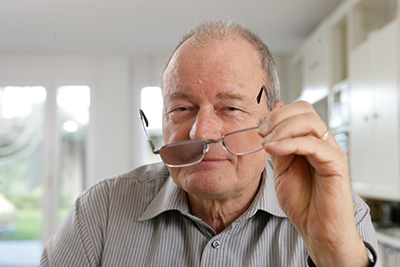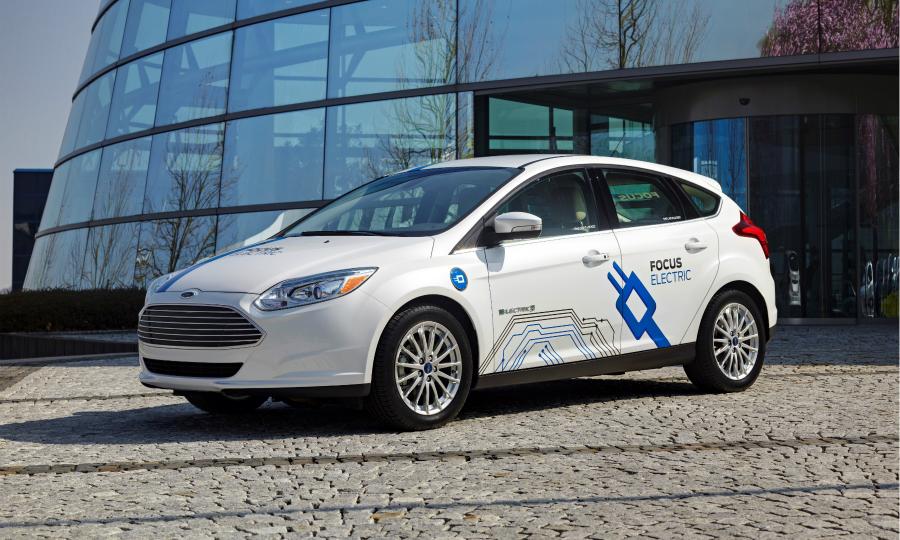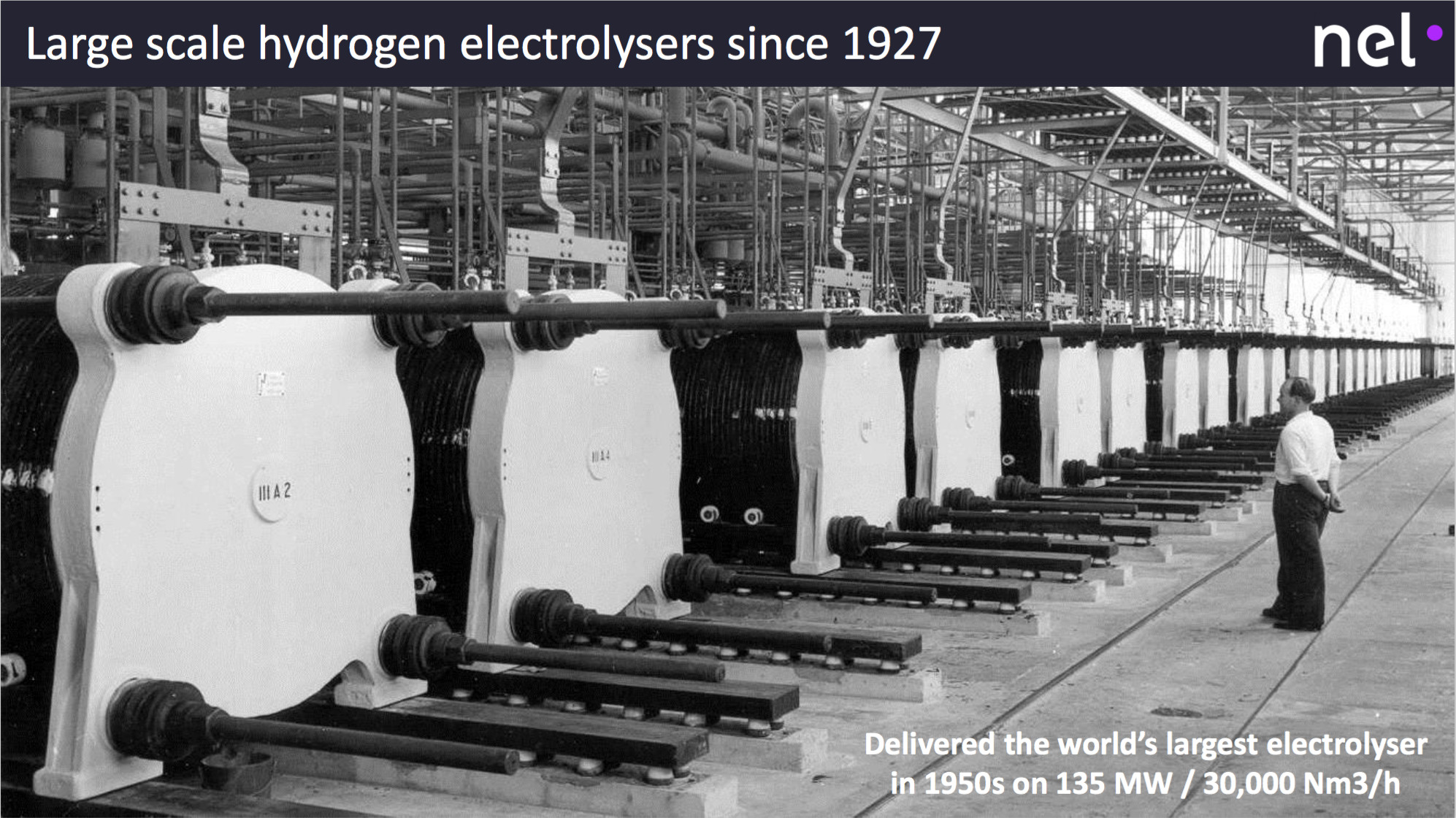Proliferation of clean energy solutions like hydrogen infrastructure and fuel cell manufacturing are held back by myths that need to be busted. In this article RMP will use common sense, simple examples, and data to dispel an argument that hydrogen production, storage, and distribution is not economical because it’s less efficient than storing energy in a battery. Many people still peddle and cling to this red herring argument as if it makes sense. That stops today. Dr. Bossel’s keyhole view of mathematics, chemistry, and physics is used as sleight of hand to mislead readers from the big picture of how energy production, storage, and grid administration really works.

Mathematically speaking, storing electrical energy in a battery is very efficient and many times storing energy in a battery makes good common sense. Also, for the record, RMP is not anti-battery and believes that batteries are important to clean energy proliferation and RMP supports the manufacture and adoption of batteries as well as BEVs for many market segments. Yes, batteries are an important part of the Hydrogen Economy.
Dr. Ulf Bossel writes that making hydrogen from electricity is inefficient and therefore a “waste” of energy. Ironically, there are terawatt hours of electrical energy being wasted each year by not using that energy to make hydrogen. The number of kWh wasted each year is also forecast go up as more clean renewable energy comes onto our grid. In the UK alone, according to ITM’s CEO, Dr Graham Cooley, 1TWh of electricity was curtailed in the past year that could have provided enough hydrogen to fuel 3 million cars to travel 350 miles.
Dr. Bossel’s argument goes like this: given a quantity of energy, it is more efficient to store that same quantity of energy in a battery rather than to create and store that same energy as hydrogen. The diagram shown below is used widespread on the Internet as the foundation to support this red herring anti-hydrogen argument. There is much more, however, to the story of producing hydrogen from renewable energy than a lab experiment argument that blows out like a candle in the wind in the real world. RMP will explain in this post why Dr. Bossel’s graph and thesis statement is not credible for economic consideration. Larger quantities of energy than 100 kWh used for demonstration purposes must be considered and those quantities do not extrapolate to a high-voltage electricity grid with simple math. Geography, geopolitics, climate, socio-economics, storage capacities, human usage habits, and natural resources are but a few of several more considerations that cannot be excluded for any economic analysis if it is to be credible.

Let’s assume the math put forth in Dr. Bossel’s diagram is accurate for argument’s sake. It shows 100 kilowatt hours (kWh) generated from a renewable source will have 69 kWh of useful energy transferred to a battery and 23 kWh transferred to your tank after efficiency losses to make H2, compress H2, transport H2, and put that H2 into a fuel cell vehicle. When you couple the simple to follow mathematical diagram with Dr. Bossel’s credentials as a fuel cell consultant, certain media outlets will use his published papers to underpin their arguments to say hydrogen cannot be produced economically.
Bloggers like Fred Lambert who’s Editor in Chief for the Tesla fan site Electrek and Zachary Shahan who’s Director & Chief Editor for the Tesla fan site Clean Technica are more than happy to publish Dr. Bossel’s work to support their anti-hydrogen view points. Websites like Electrek and CleanTechnica attempt to use Dr. Bossell’s lab science as credible information that can be used to write energy and economics policy outside of laboratory parameters. Fred Lambert posted this article using Dr. Bossel’s diagram on the same very same day I started working on this post your reading now. Sites like Electrek & CleanTechnica are still currently publishing Dr. Bossel’s diagram to support their arguments against hydrogen fuel cells even though developments in the fuel cell industry are happening frequently each month and creating mountains of evidence refuting their false viewpoints. Dr. Bossel’s diagram has been propagated for years since he first published it along with his supporting paper “Does a Hydrogen Economy Make Sense” in 2006. Now eleven years later, in 2017, if any media outlet uses Dr. Bossel’s thesis to support economic science, they lose credibility.
Dr. Bossel has published the same work explaining his thesis against the Hydrogen Economy in several different years and places but in this particular publication served by the AFDC we get the following quote that disqualifies Dr. Bossel’s work in the very first paragraph:
As there are no environmental or energetic advantages in producing hydrogen from natural gas or other hydrocarbons, we do not consider this option, although hydrogen can be chemically synthesized at relative low cost
Why would you exclude the #1 method by which approx 90% of H2 is currently made in a paper that is supposed to explain how Hydrogen Economy doesn’t make economic sense? Natural gas is a major part of the fossil fuel ramp down in the Hydrogen Economy and he has already disqualified his paper from serious consideration by saying natural gas production of H2 has been excluded from his analysis. Blue Hydrogen, which is hydrogen made from CH4 with its CO2 sequestered, is surely something to consider. #CCS, or Carbon Capture & Sequestration, is currently being done successfully in northern lower Michigan as RMP wrote about here. #CCS technology is working now across the country & logging numbers. Natural gas considerations would absolutely need to be included in a paper about the Hydrogen Economy. This point is a big one because any economic analysis must include every aspect and angle possible. An economic paper cannot rely on a keyhole analysis that distracts from the bigger picture especially when the single biggest current source of H2 production is ignored. There are other examples of where this paper gets it wrong and how it in no way can be considered relevant to understanding how the economy or a high-voltage electricity grid works.

Dr. Bossel does make some valid points in his papers about using neutral hydrocarbons from “the biosphere” as he says and converting them to liquids like methanol. Using carbon neutral hydrocarbons to make liquids for economics of transport for longer distances (e.g. >200km) is smart. Carbon neutral synthetic hydrocarbons like methanol and other liquid H2 carriers like ammonia are necessary to society. Natural gas that is flared and vented in massive oil fields & landfills around the world as a waste gas or nuisance gas could be economically captured as useful methanol to create jobs and reduce GHGs. Read this post RMP published on October 27, 2015 in our Michigan Oil & Gas Monthly magazine as part of our leading coverage of Michigan’s hydrocarbon infrastructure and how RMP supports turning carbon neutral methane into methanol.
Unfortunately Dr. Bossel’s good mathematical points in the paper are overshadowed by his myopic and narrow view of physics while ignoring other important facets of how a complex economy works. Dr. Bossel does not make a good case because he excludes too many considerations for his paper to carry merit. Dr. Bossel’s papers have also lost relevancy given the rapid advances in renewable energy generation capacities that he lacked the foresight to see over approximately 11 years ago. The process to increase hydrogen production from H2O has decreased in costs via many new methods of electrolysis. More stories are being written about breakthroughs in electrolysis economics each new month since Dr. Bossel’s paper was written. One of the most promising electrolysis & fuel cell technologies is called high temperature reversible SOFC electrolysis.
Many things have changed since since Dr. Bossel published most of his work in 2005-2008. Dr. Bossel does not understand how our energy grid works and where waste is really occurring. Dr. Bossel’s thesis statement is that converting water to hydrogen is a wasteful use of electricity. Ironically, we often have more generating capacity than we can use or transmit and we are curtailing electricity generation that hydrogen production could easily soak up and save for cloudy and windless days. It’s actually wasteful to not create hydrogen because so much electricity is going unemployed. RMP will drive this point home throughout this rebuttal to Dr. Bossel’s thesis and we will look at data from various sources like CAISO to support this thesis argument. Economics is a complex subject and it’s imperative that all things are considered which is where Dr. Bossel’s arguments fail.
Like a pinhole aperture on a camera blocking nearly all light for a very specific photo shot to work, Dr. Bossel’s argument is ruined if the oculus is opened even the tiniest of bits. Any sound economic argument, however, must have the aperture cranked all the way open and stand up to broad sunlight scrutiny or it is has no credibility. Having laid down the thesis of why Dr. Bossel’s anti-hydrogen argument doesn’t work, let’s look at some real world examples.

Producing, compressing, and storing hydrogen might seem wasteful in a laboratory analysis, but the opposite is true in the real world. Let’s talk about electricity “curtailment”. Curtailment of carbon zero renewable electricity is when wind & solar electricity generation capacity exceeds society’s immediate needs and the grid operator does not allow that electricity onto the grid. Terawatt hours are being wasted each year on grids around the globe because of not employing that capacity to store energy as hydrogen. This video from fully charged explains clearly how using excess electricity for making hydrogen is a smart economic solution for citizens in Scotland’s Orkney Islands. The Orkney Islands’ example shows a microcosm of how governance of a high voltage electric grid is helped by making hydrogen with surplus renewable electricity.
A major high-voltage electricity grid can be understood well by turning to the California ISO, hereafter CAISO. CAISO governs the California electricity grid and California is massive. If California was a country, it would have an economy as large as the economy of France. CAISO is led by an experienced Board of Governors and executive management team that set policies to ensure the reliable performance of the high-voltage electricity grid, open access to participants, and a transparent, competitive market for energy. The California ISO provides open and non-discriminatory access to the bulk of the state’s wholesale transmission grid, supported by a competitive energy market and comprehensive infrastructure planning efforts. CAISO publishes this short and straightforward document that in 4 short pages explains some fast facts about renewable energy and the “Duck Chart” that is stereotypical of any major high-voltage electricity grid. Within that document is a paragraph that refutes Dr. Bossel’s thesis. On the Over Supply Mitigation section on page 3 of the document, the first paragraph reads:
Oversupply is when all anticipated generation, including renewables, exceeds the real-time demand. The potential for this increases as more renewable energy is added to the grid but demand for electricity does not increase. This is a concern because if the market cannot automatically manage oversupply it can lead to overgeneration, which requires manual intervention of the market to maintain reliability. During oversupply times, wholesale prices can be very low and even go negative in which generators have to pay utilities to take the energy. But the market often remedies the oversupply situation and automatically works to restore the balance between supply and demand. In almost all cases, oversupply is a manageable condition but it is not a sustainable condition over time — and this drives the need for proactive policies and actions to avoid the situation.
RMP has been publishing a similar thesis point to CAISO’s oversupply mitigation policy for years. RMP is at its core an organization dedicated to protecting freshwater natural resources by making better use of things that are otherwise considered waste. All of that wasted electricity could be employed easily, economically, and with proven technology if it were used to convert water into hydrogen. The argument that making, compressing, and storing hydrogen is 3 times less efficient than putting that same electricity into a battery is a red herring argument plain and simple because of this. The costs to store electricity as hydrogen are between €10 & €20 euro per kilowatt hour vs approx €600 to €800 per kilowatt hour in lithium batteries (jump to 16:05 mark). There are tens of thousands of megawatt hours curtailed each month on California’s grid alone and RMP is predicting we will soon see over 100k megawatt hours curtailed in a single month in California. California has so much renewable energy generation capacity being added to the grid each year the 100k MWh threshold in a single month could even be surpassed as early as 2018. Furthermore, California is but a microcosm example of every other major high-voltage grid around the world. Now let’s back these arguments up with data that can be verified by anyone with an Internet connection.

CAISO has been keeping curtailment data records for years but has specifically started detailing curtailment increases in the past few years when renewable energy generation started rapidly integrating onto the California grid. The graph to the left depicts historical curtailment data of renewable generation since 2014 and can be accessed directly from this link. This graph demonstrates clearly the irony and opposite nature of Dr. Bossel’s incorrect thesis. If electricity is supposed to be wasted by making hydrogen, why then are we wasting so much electricity now? Dr. Bossel’s argument doesn’t make any sense, yet it has been used to mislead many people on media sites with low journalistic integrity. Junk science is being used to mislead people against clean and sustainable hydrogen production based on emotional and incorrect information. The truth is that electricity is being wasted by not making hydrogen. All of these wasted MWh of electricity could be turned into hydrogen to balance the grid and take pressure off of it. Furthermore, the number of curtailed MWh is trending upward which means even more wasted MWh are forecasted for the future if we don’t employ proven water to hydrogen electrolysis assets on our grids around the world. NEL hydrogen has been in the clean energy production business since 1927. NEL has been growing their business and creating jobs to bring sustainably produced hydrogen to market for 90 years. NEL’s contributions to a sustainable grid about are about to grow by exponential sales figures in the coming years. Here’s a great presentation of what NEL Hydrogen does that defies Dr. Bossel’s thesis. NEL is creating jobs with a solution that relieves pressure on aging grids with otherwise wasted or curtailed electricity generation from renewable sources.
Thankfully CAISO has been collecting and publishing hourly usage & curtailment data for years so we can use real world data to refute phony arguments about how producing hydrogen would waste electricity. Furthermore, even if you didn’t understand much about high-voltage electricity grids, you can clearly see a trend in the graph showing the number of MWh of renewable electricity curtailed going up each year as a result of more solar and wind generation capacity coming online each year. While Dr. Bossel’s thesis statement does not extrapolate from the laboratory out to the real world at all, RMP’s thesis statement that curtailed electricity MWh will continue to go up each year can be extrapolated to every grid around the world. This phenomenon will increase as we construct more and more clean renewable electricity generation each year like wind & solar. Hydrogen can be made cheaply and in unlimited quantities wherever there is generation capacity being curtailed or wasted. While batteries can play an important part of working together with fuel cells to help in ramping flexibility so grid operators like CAISO can react quickly to changes in electricity net demand, batteries on their own are not economical for large storage that can feed electricity into the grid for days, weeks, or months when renewable generation is weak and unreliable. This is especially true in major cities north of the 40th parallel that experience long cold winters when the skies are mostly overcast for months at a time.

Making hydrogen from otherwise wasted electricity generation capacity takes pressure off the grid with the growth of intermittent renewables. Fast charging like Tesla’s Super Charging sites, however, are virtually all on grid, which adds pressure to the grid while also relying on transmission lines that are vulnerable to our increasingly volatile weather. If transmission is disrupted by felled power lines, so too would grid charging transportation be disrupted until power is restored. Hydrogen allows us to balance the grid as well as go off the grid because H2 fueling stations provide off grid storage.
We need to see a plan of how an anti-hydrogen activist’s grid would work that can be peer reviewed. There was a long ramp to get into our current situation with base load coal plants still burning and belching SOx, NOx, COx, Hg, & PMs into our air and water around the clock. The ramp down of fossil fuels to a fossil free society must be explained in a manner that can be peer reviewed with substantive explanations. We need an explanation that includes numbers and support, not empty ad hominem attacks. How are we going to decommission coal plants and replace the base load power they supply without using fuel cells? In the Hydrogen Economy, the Hydrogen Council, which is meeting in Bonn Germany in this month, just published this “Hydrogen Scaling Up” document that explains initiatives in detail and is open for peer review. The United States Department of Energy has a whole section on their website called H2@Scale explaining how the Hydrogen Economy works and is also peer reviewable public information. With so many credible sources publishing peer reviewable plans for the Hydrogen Economy, where are the plans showing a sustainable economy without hydrogen or fuel cells?
2016 Aggregate electricity generation data from the EIA shows that of 4.08 trillion kWh produced in the USA, over 30% of that production (1.24 trillion kWh) came from coal generation. There has to be a ramp to get down from where we are today. We need to see a plan from those who think a switch gets magically flipped and those 1.24 trillion kWh of base load power are replaced. The same replacement explanation is needed to explain how natural gas (@ 1.38 trillion kWh), and nuclear (@ 803 billion kWh) would be replaced. How do you replace this generation without fuel cells? Show us the plan. If you were to cut out fossil fuel generation overnight, the effects would be devastating with a recent case & point being the island of Puerto Rico after Hurricane Maria. As of November 13, 2017, still half of Puerto Rico’s grid remains off line. People remain in desperate need of energy in order to have clean water and to generate power for their hospitals. In a Hydrogen Economy with a distributed grid, power outages would be less wide spread. Natural gas lines generally run underground and can feed SOFCs and PAFCs that are powerful enough to provide electricity and hot water for hospitals & hotels at upwards of 85% efficiency. Natural gas lines are much less likely to be taken out by natural disasters like above ground power lines. If you have a BEV in Puerto Rico, you might be part of 50% of the population that has not been able to charge it since September. People in Puerto Rico at the date of this publication are still desperate for gasoline to power their vehicles. These serious issues deserve serious consideration.

RMP compiled data from the EIA here to make a quick graph shown at the left to demonstrate the breakdown of our USA electricity generation. Total renewable generation makes up 16.1% of all generation of 4.08 trillion kWh while approximately 65% of that generation came from fossil fuels. Of the 16.1% generation from renewable sources, hydropower leads the way at 6.5%. Wind comes in second at 5.6% and solar registers at less than 1% !!! The notion that we switch to BEVs only and put solar panels on our roofs and we’re all done is not a credible position to have. Using BEVs and solar panels on our rooftops is a great idea and it’s admirable to pioneers who are looking to help make the world a better place; but those efforts do not scratch the surface of the challenges we face in order to eliminate fossil fuels from our economy. We have to be much more thoughtful than that. There is no flipping a switch to get there and we need to see a thoughtful white paper from someone other than Dr. Bossel, because his thesis is not credible nor is any media outlet that uses it to support economic viewpoints.
And that’s how the debunking of Dr. Bossel’s anti-hydrogen thesis ends. RMP does not mean to pick on Dr. Bossel in a personal way but must stand up to protect the truth when someone gets the science wrong and misleads the public. Dr. Bossel has made good contributions to the science of physics and makes good points about the energy density issues of methanol and ammonia versus those of compressed or liquefied H2. To those points, RMP finds common ground with Dr. Bossel. But, where economic science is concerned, Dr. Bossel’s thesis quickly falls apart and becomes not credible.
Dr. Bossel’s failure to include natural gas in his analysis shot his argument in the foot from the very first paragraph. By failing to demonstrate knowledge of how a high-voltage electricity grid works, Dr. Bossel further disqualifies himself as a credible source.
Feel free to tell RMP where we you think we got it wrong and please leave a comment whether you support or disagree with RMP. Click here to follow our Twitter feed and click here to like RMP on facebook. Thanks for reading and please share this post on your social media by clicking the share links below. If you can afford to support our Michigan based 501(c) non-profit organization in a financial way please click here to make a tax deductible donation (only donations made in the USA are tax deductible but we would welcome international contributions too). If you would like to join us and publish your articles right here on RMP’s website and you can support your arguments for green energy with verifiable references, please contact RMP by leaving a comment below or writing to us at respectmyplanet@gmail.com. We would love to publish more content that debunks junk science. Thanks for reading.

Leave a Reply to Matt Wandel Cancel reply